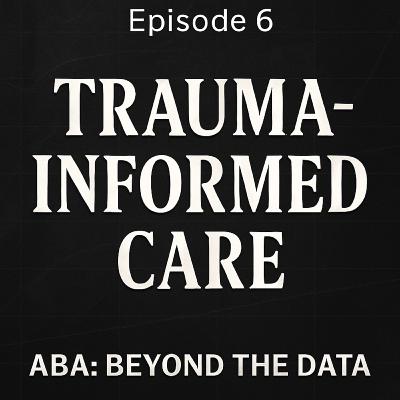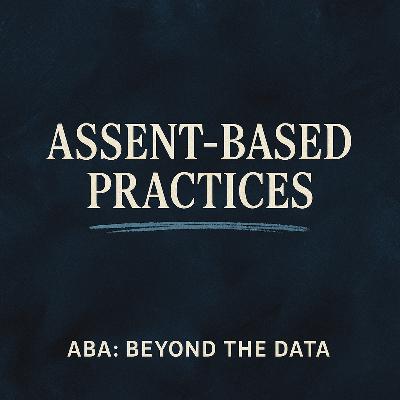Episode 6 - Trauma Informed Care
Description
CEU info: This episode qualifies for Ethics CEU. Listen for the three keywords and submit them at aba-ceu.com to claim your CEU.
“Trauma-Informed Care in ABA” gets practical about something that’s often treated like a slogan. We start by defining trauma in plain language—acute, chronic, and complex—and focus on impact: how histories of unpredictability and lost agency change what feels safe, how fast escape becomes the best option, and what that means for the contingencies we arrange. From there we connect the dots to modern, assent-based ABA: predictable openings, real choices, a clean “pause” pathway, simple communication that works immediately, humane delays, and micro-successes during waits. If you’ve heard our “My Way” episode, you’ll recognize the backbone—communication → tolerance → cooperation—applied deliberately through a trauma-informed lens.
We also confront the training gap. Most behavior analysts endorse trauma-informed practice but report little formal preparation. So we close it with a supervisor toolkit: four 15-minute micro-modules (safety and predictability; assent and choice; reinforcement-first teaching; compassionate care skills), concrete behavior goals (four authentic choices per 10 minutes; honor opt-out in ≤3s; 4:1 acknowledgments; a “first five minutes” script), tight role-plays with checklists, IOA on assent recognition, and small weekly huddles that post real data the team can see. If a safety procedure is ever unavoidable, we frame it as a temporary, data-based exception with pre-brief criteria, informed consent, debrief, and an immediate plan to fade via skill building.
By the end, you’ll have a clear way to show that trauma-informed ABA is not extra; it’s the Ethics Code in action. You’ll know how to document not just behaviors reduced but harms avoided—fewer holds, fewer room clears, more observable assent, faster re-engagement, and caregiver reports of “felt safe” and “would do again.” And you’ll have language you can use tomorrow that keeps sessions humane, effective, and deeply behavior-analytic.
Who it’s for: BCBAs, BCaBAs, and RBTs who want compassionate, research-aligned practices that improve engagement and outcomes in autism intervention—and clinic leaders who need an actionable plan to coach and measure this work.
Sources (selected):
Hanley, G. P., Rajaraman, A., Gover, H. C., & Staubitz, J. L. (2022). Toward trauma-informed applications of behavior analysis. Behavior Analysis in Practice.
Taylor, B. A., LeBlanc, L. A., & Nosik, M. R. (2018). Compassionate care in behavior-analytic treatment. Behavior Analysis in Practice.
Wheeler, K. (2024). Behavior analysts’ training and practice regarding trauma-related concepts. Behavior Analysis in Practice.
Gover, H. C., Rajaraman, A., & Weiss, M. J. (2024). Incorporating trauma-informed care strategies into assessment and intervention for food selectivity.
Hanley, G. P., et al. (2014). Skill-Based Treatment (“My Way”) and synthesized contingencies. Journal of Applied Behavior Analysis.
Rohrer, H. M., Jessel, J., & Hanley, G. (2021). Assent-based practice. Behavior Analysis in Practice.
CASP (2024). Practice Guidelines 3.0. Visit: https://aba-ceus.com










